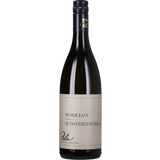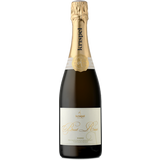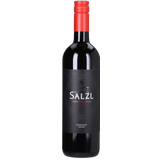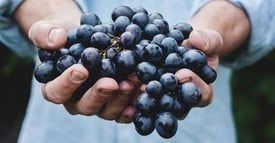The Secrets Of Winemaking: How To Create Great Wine
The basics of winemaking
Wine is a sophisticated drink, the character of which the best sommeliers in the world struggle to describe in all its facets. But how does winemaking actually work and how is red wine, white wine or rosé made from grapes around the world? We'll tell you.
When did viticulture start?
The earliest references to winemaking date to the eighth millennium BC. At that time, viticulture was being practised in the Middle East. Many great civilizations have recorded their methods of winemaking in murals and writings. However, these processes have only the basic grapes in common with our modern, partly automated wine production.
Grapes are the raw material for making wine. That has not changed for thousands of years. Few fruits are as diverse as grapes. How they taste during harvest and after wine production depends largely on the varietal, soil and climate. Of course, the winemaker himself also has a great influence on the resulting wine, be it through choices in the vineyard or various vinification options. Since wine is a natural product, the same varietal from the same slope may have a completely different character from year to year. The wines from the best vintages are in great demand among wine connoisseurs and collectors.
How do winemaking processes work?
First of all, the grapes are picked by hand or by harvesting machines. The use of so-called picking machines usually does not have a negative effect on the quality of simpler wines, but winemakers who process high-quality grapes swear by hand-picking. This allows them to preselect the grapes and remove spoiled and unripe berries.
Mashing is the second step in winemaking. To do this, the grapes are loosened (rubbed) from their stems and crushed. Depending on the type of grape and wine, these can also be pressed with the stem (whole grape pressing) in order to obtain delicate wines.
Red or white - what are the differences in winemaking?
There is one fundamental difference between red and white winemaking. In the production of white wine, the must is pressed and then sulphurised after the grape skins have been removed and before fermentation. In the production of red wine, the mash is only put into the press after fermentation. The residues, also called pomace, are separated from the juice. The seeds must not be crushed, as their unpleasant bitter taste would otherwise get into the wine. Today, ultra-modern stainless steel tanks are mostly used for every step connected to pressing and storage, although the mash can also ferment in wooden barrels.
Good wine takes time
Now the most famous part of winemaking begins, ageing. Anyone imagining of bulging wine barrels also thinks of this maturation process. Nowadays, wine is often stored in tanks for ageing. After maturation, the lees are separated from the wine and sulphurised. Certain quality wines then require bottle maturation.
For most wines, the storage phase begins after the maturation period. The rumour that wine gets better the longer it is stored is not generally true, but it is true that it has to be stored for a while in order to develop its aroma after fermentation and maturation.
The essence of the story?
The type and quality of wines largely determine how the exact process of winemaking takes place. In white winemaking, for example, there is often no or only a short maceration period in order to obtain a more fruity wine with few tannins, whereas in red wines the longer maceration time creates a better colour and tannin yield.
The numerous vinification methods ensure a wide variety of traits in wine. Handpicked high-quality grapes are pressed particularly gently and usually matured separately in steel tanks or wooden barrels. Bottle fermentation, on the other hand, ensures a unique bouquet and high quality, especially for sparkling wines.
The next time you buy wine, read the label. The description often contains more detailed information on which steps the wine has gone through.
Latest reviews
-
 4.0 (9)
4.0 (9)Polz Steirischer Spiegel 2024, 0,75 L
- Cuvee of Sauvignon Blanc, Riesling, Müllter Thurgau
- Very aromatic, accessible and light
- Pure Styrian drinking pleasure for warm days
€ 9,99 (€ 13,32 / L)Delivery by December 20
-
-
 5.0 (6)
5.0 (6)Polz Morillon SüdStmk. DAC 2024, 0,75 L
- A dry white wine from a top south Styrian winery
- Classically matured in steel tanks
- Fresh with supporting acidity
€ 12,99 (€ 17,32 / L)Delivery by December 20
-
-
 5.0 (3)
5.0 (3)Krispel Rosé Brut Reserve g.U. 2021, 0,75 L
- 18 months traditional bottle fermentation
- Very elegant, dry, delicate perlage
- High-quality sparkling wine
€ 21,99 (€ 29,32 / L)Delivery by December 20
-
-
 4.5 (4)
4.5 (4)Salzl Zweigelt Reserve 2021, 0,75 L
- Matured for 12 months in barriques
- Fruity, juicy, accessible
- Exceptional red wine at an unbeatable price
€ 12,99 (€ 17,32 / L)Delivery by December 20
-
Magazine Articles:
Discover 9wines Online:
-
Austria: Free standard delivery from € 49,90
-
We operate in a
climate-conscious manner. -
Free
returns Secure payments
with SSL encryption technology





